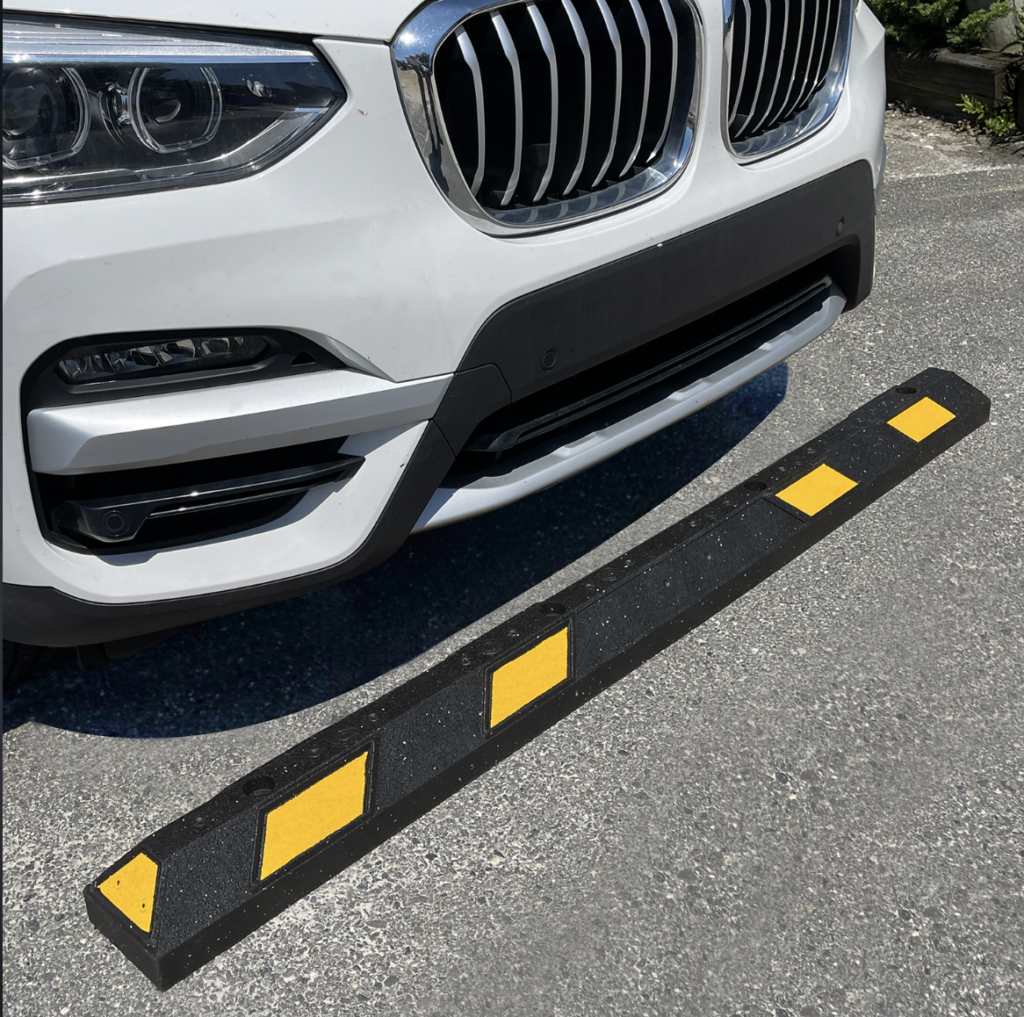Wheel stops are essential components of parking lots and commercial properties, providing a barrier to prevent vehicles from overrunning parking spaces or damaging buildings, landscaping, and other features. This blog post will explore the different types of wheel stops, discuss the installation process, and provide tips for maintaining them to ensure their effectiveness and longevity.
Types of Wheel Stops:
- Concrete Wheel Stops: Concrete wheel stops are durable and long-lasting, offering excellent resistance to weathering and wear. However, they can be heavy and cumbersome to install.
- Rubber Wheel Stops: Rubber wheel stops are made from recycled materials, making them an eco-friendly option. They are lightweight, easy to install, and provide good impact resistance.
- Plastic Wheel Stops: Plastic wheel stops are lightweight and resistant to chipping or cracking. They are available in various colors and can be easily installed with basic tools.
Installation Process:
- Site Preparation: Before installing wheel stops, ensure that the area is clean, dry, and free of any debris or obstacles that could interfere with installation.
- Placement: Determine the optimal placement for your wheel stops, taking into consideration factors such as parking space dimensions, traffic flow, and accessibility requirements.
- Anchoring: Securely anchor the wheel stops to the ground using the appropriate hardware, such as bolts, anchors, or adhesive, depending on the type of wheel stop and the surface material.
- Visibility: Enhance the visibility of your wheel stops by applying reflective paint or installing reflective markers to help prevent collisions and ensure driver safety.
Maintenance Tips:
- Regular Inspections: Inspect your wheel stops regularly for signs of damage, wear, or loose anchors. Address any issues promptly to maintain their effectiveness and prevent potential accidents.
- Cleaning: Keep your wheel stops clean by periodically removing dirt, debris, and other buildup. This will help maintain their visibility and prolong their lifespan.
- Repainting: If your wheel stops are painted, monitor the paint’s condition and consider repainting when it begins to fade or chip. This will help maintain visibility and prolong their useful life.
- Replacement: Over time, wheel stops may become damaged or worn to the point that they no longer provide effective protection. In these cases, consider replacing them with new wheel stops to ensure continued safety and functionality.
Wheel stops play a crucial role in maintaining the safety and organization of parking lots and commercial properties. By selecting the appropriate type of wheel stop, properly installing them, and performing regular maintenance, you can ensure their effectiveness and longevity.

